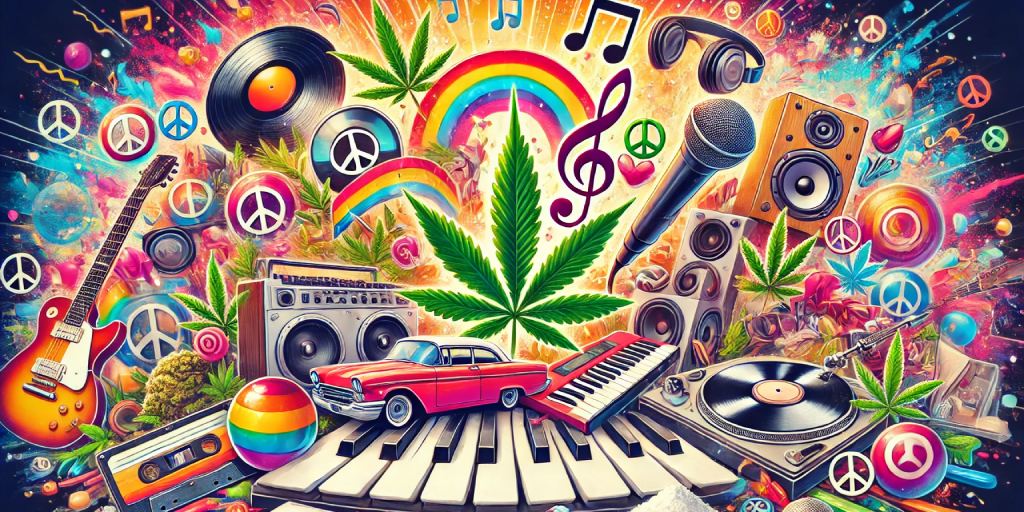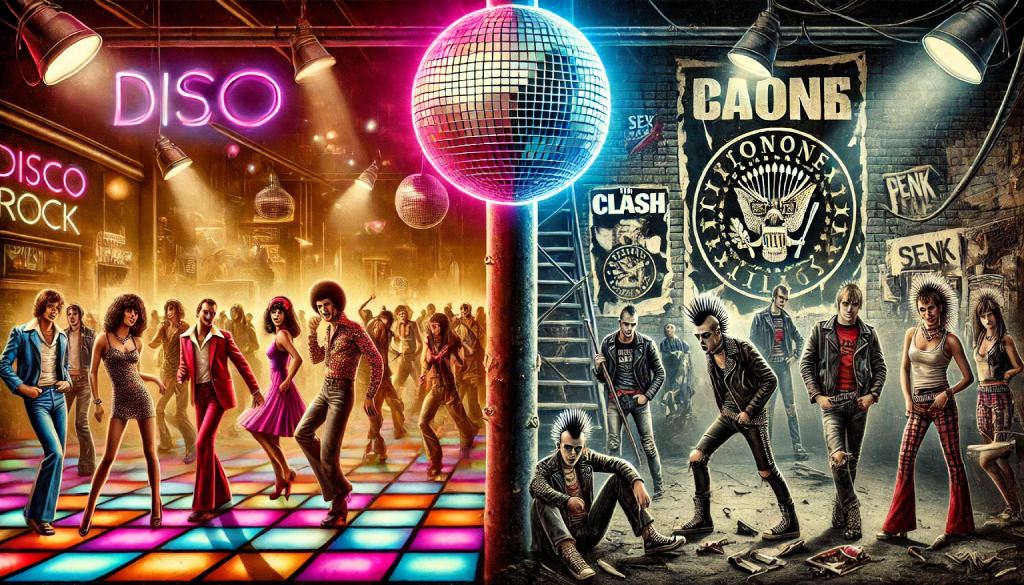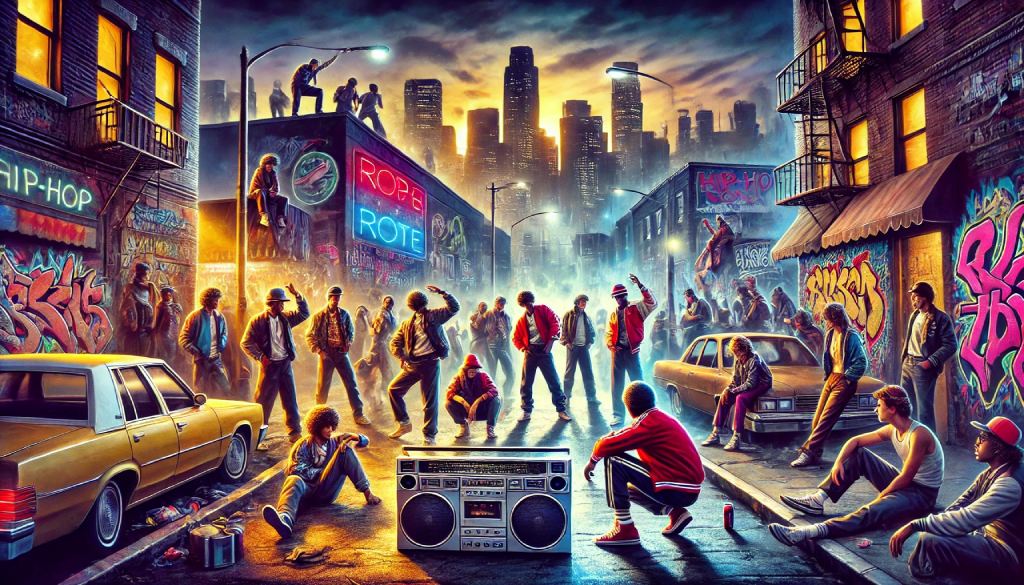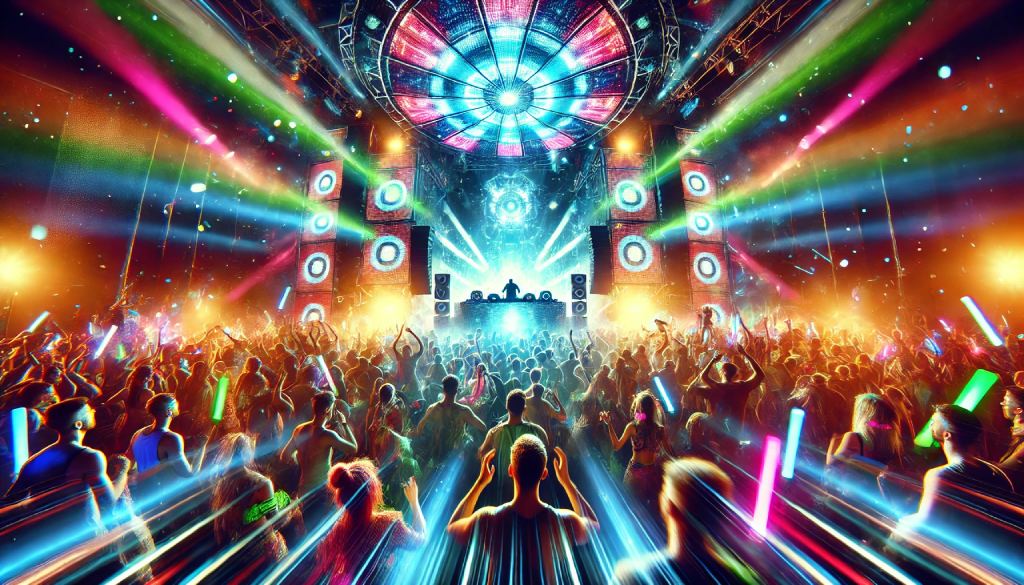
Music and drug use, it sometimes seems like they go hand in hand. Not only listeners, but also music creators often talk about the role of drug use in the creative process. Everyone knows the phrase ‘Sex, Drugs and Rock & Roll’, but long before that, people spoke of ‘Wine, Women and Song’. How is it that music and mind-altering substances blend so seamlessly? In this blog, we delve deeper into the relationship between the two.
Disclaimer
This is another one of those articles from Dutch-Headshop where it seems like we’re promoting drug use. And in a way, we are. But not every substance is wise to take. Even relatively safe and natural substances can have unwanted effects in the wrong setting. Drug use of any substance is not recommended if possession is illegal. And that varies greatly by country. Make sure you are aware of the law, but more importantly, the effects of the drug you are taking. This way, you can avoid unpleasant experiences. Okay? Now on to the fun stuff.
Cannabis and Jazz Music
Singing about drug use is certainly not a new development. In 1933, Jazz musician Cab Calloway sang in the song Reefer Man about the local weed dealer. The fact that many jazz and swing musicians sang about smoking weed already received a lot of criticism back then.
Sex, Drugs and Rock n Roll
While America was still in the midst of the Vietnam War, music began to contain increasingly controversial messages. This was the time of Elvis Presley’s swinging hips, which at that time were an absolute sex symbol. All this disobedience eventually manifested in the youth counterculture, better known as the flower power movement of the hippies in the late 60s.
Psychedelic Rock and Psychedelics
By the late 1960s, song lyrics about drugs were no longer so rare. Hippies were seen as free-spirited and sex-crazed drug users. Particularly, weed, hashish, and psychedelics like magic mushrooms were associated with psychedelic music. Janis Joplin sang about her favorite plant in the song Mary Jane. Jimi Hendrix sang in his song Purple Haze about the then-popular psychedelic drug LSD, just like The Beatles with their song Lucy in the Sky with Diamonds. Jim Morrison of The Doors took it a step further with the song The Crystal Ship about cocaine and heroin.
‘’Music is a safe kind of high.’’- Jimi Hendrix
Many of these artists unfortunately died prematurely due to their extravagant lifestyle and the polydrug use of that time. Although the shock was great at the time, it did not stop artists from continuing to place references to drugs in their songs.
Punk & Disco
During the 1970s, disco stormed the music scene. Disco is dance music that filled discotheques. This was also the place where many drugs were in circulation. The party drugs of this time were poppers, cocaine, and methaqualone (quaaludes), also known from that hilarious scene in The Wolf of Wall Street.

In contrast to the cheerful disco tunes and the complex nature of progressive rock, which arose from psychedelic rock, stood the hard, straightforward world of the punks. Punk rock produced a raw, hard, and rough sound that first resonated in the garage rock scene in England. Punk rock was an outlet for city dwellers to express all the frustrations of the time. The leading figures of this punk rock movement were the Ramones, The Clash, and The Sex Pistols. All three bands reflected the rebellious and sometimes destructive punk culture of that time.
Hip-Hop
In the 1980s, the golden age of hip-hop, a crack-cocaine epidemic raged in America. Especially poorer people in large inner cities experienced a lot of violence and crime due to the trade in this smokable variant of cocaine. Hip-hop groups such as N.W.A. openly criticized police enforcement. Many rappers who grew up during this time later drew inspiration from their turbulent youth.

Addiction, Grunge, and Stoner
In Seattle, in the mid-80s, Grunge emerged; a new music style best known from successful bands like Nirvana, Pearl Jam, and Alice in Chains. Grunge music was a fusion of punk rock and heavy metal, often accompanied by lyrics about themes such as anxiety, abuse, isolation, and addiction. The drug most associated with grunge was heroin. Stoner rock and the heavier variant stoner metal or stoner doom emerged from pioneers like Kyuss and Sleep, who were inspired by earlier acid rock. Stoner was characterized by low-frequency range, droning guitar riffs, mid-tempo, and lyrics that often referred to cannabis use.
Drugs and Alcohol in Pop Music
By the 21st century, references to drugs or alcohol were no longer absent from music. In 2007, research showed that about one-third of all music was about alcohol or drugs [1]. Of that third, only 4% mentioned the drawbacks or consequences of using them. A few well-known pop songs about drug use are: The Weeknd - Can't Feel My Face and Tove Lo - Stay High.
Electronic Dance Music and Party Drugs
Finally, EDM (electronic dance music); a broad genre where maybe not much is sung, but where there is still a strong connection to drug use. Various sub-genres emerged from disco, dub, and funk with a few successful formulas like Chicago house, synth-pop, electro, and Detroit techno in the early 80s. The fast, repetitive rhythm that these genres share encourages listeners to move and dance. EDM is often found at raves or music festivals. The drugs of choice in EDM are, among others, ecstasy (MDMA), speed (amphetamine), and 2C-B. These synthetic substances share the ability to stimulate your endurance , which helps to keep up with the fast pace of the music and dance for hours on end. Often, there is not much singing in EDM, but a few phrases or words are constantly repeated. A few songs that don’t really beat around the bush are: I Took a Pill in Ibiza (Seeb remix) and Drugs from Amsterdam. Trance, which emerged in the 90s, grew into great commercial success with acts like Avicii, Armin van Buuren, and Tiësto. The dreamy nature of the music pairs well with psychedelics and entactogens like ecstasy.

The Relationship Between Drugs and Music
At first glance, drugs and music seem totally different from each other. Yet they have more in common than you might think. That’s because your brain reacts in a similar way to drugs or your favorite song. When you treat yourself with either, your brain is flooded with dopamine and serotonin. You get an overwhelming feeling of joy and energy, and your sensory perception will also be sharpened. This is why drugs and music can go so fantastically together.
Does Music Sound Better with Drugs?
The short answer: yes. Certain types of drugs and music genres go well together. There’s a reason for that. Psychedelic drugs, for example, lower the activity of a region in the brain known as the Default Mode Network. This gives your brain the feeling that you are seeing or hearing things for the first time. Listening to your favorite music during a trip comes through almost unfiltered, allowing you to experience it in a whole new way. Additionally, these same drugs also cause synesthesia; the merging of sensory perceptions. This allows you to taste color or see sound as buzzing patterns. New research suggests that all babies experience synesthesia and that we unlearn it as we grow older. With psychedelics, you get back the unfiltered brain of a child, if only for a moment.
Other types of drugs can significantly boost your concentration. By not thinking about the past or what you need to do tomorrow, you can focus on the here and now and focus on what you hear in the music. Appreciating the rhythm, lyrics, and interplay of the instruments without external distractions will certainly enhance your listening experience.

The Role of Drugs in Making Music
The creative process of making music is for many artists inextricably linked to the use of drugs. For pioneers of modern music such as The Beatles, Jimi Hendrix, The Doors, The Grateful Dead, and Pink Floyd, cannabis and psychedelics were the secret sauce that brought their musical masterpieces to life. They openly admit that these substances sharpen their senses, break down barriers, and open the door to a world full of new sounds and ideas. In the modern music scene, drugs remain a source of inspiration for artists across various genres. From the pulsing beats in house and techno to the raw energy of metal and the deep lyricism in hip-hop and R&B. It’s no secret that many musicians use drugs to deepen the creative process. Artists such as A$AP Rocky, Tame Impala, and The Weeknd openly talk about how cannabis helps them discover new sonic landscapes. And don’t forget Snoop Dogg.
In the metal world, bands like Tool and Electric Wizard use psychedelics to enhance their heavy, atmospheric, and sometimes mathematically complex sounds, giving their music a transcendent depth. Also, in the EDM scene, producers like Flume and Disclosure find that psychedelics help them create unique, immersive musical experiences. And rockers Tenacious D sing in Tribute about a song they wrote when they were so high that they invented “the best song in the world” and forgot to write it down.
The relationship between drugs and music is stronger than we often dare to admit. Countless substances blur the line between reality and imagination, resulting in music that takes listeners on a sensory journey full of new insights and emotions. This is why cannabis, psychedelics, ecstasy, and even hard drugs remain powerful tools for musicians to realize their artistic vision, but also for listeners who better understand the artist's message.
Sources
- [1] Primack, B. A., Dalton, M. A., Carroll, M. V., Agarwal, A. A., & Fine, M. J. (2008). Content Analysis of Tobacco, Alcohol, and Other Drugs in Popular Music. Archives of Pediatrics and Adolescent Medicine, 162(2), 169. https://doi.org/10.1001/archpediatrics.2007.27
- Sumnall, H., Hamilton, I., & Gage, S. (n.d.). The link between drugs and music explained by science. The Conversation. https://theconversation.com/the-link-between-drugs-and-music-explained-by-science-89132
- Fourie, G. (2024, April 8). Drugs and Style Through the Decades | White River Manor. White River Manor. https://www.whiterivermanor.com/news/drugs-and-style-through-the-decades/
- Ervin, B. (2024, January 10). What drugs effect how music sounds? Silver Pines. https://silverpinestreatmentcenter.com/resources/what-drugs-effect-how-music-sounds/